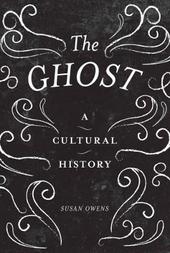
|
The Ghost: A Cultural History
Hardback
Main Details
| Title |
The Ghost: A Cultural History
|
| Authors and Contributors |
By (author) Susan Owens
|
| Physical Properties |
| Format:Hardback | | Pages:288 | | Dimensions(mm): Height 234,Width 156 |
|
| ISBN/Barcode |
9781849764674
|
| Classifications | Dewey:133.109 |
|---|
| Audience | |
|---|
| Illustrations |
80 colour illustrations
|
|
Publishing Details |
| Publisher |
Tate Publishing
|
| Imprint |
Tate Publishing
|
| Publication Date |
3 October 2017 |
| Publication Country |
United Kingdom
|
Description
"Five thousand years have now elapsed since the creation of the world, and still it is undecided whether or not there has even been an instance of the spirit of any person appearing after death. All argument is against it; but all belief is for it." - Samuel Johnson Ghosts are woven into the very fabric of life. In Britain, every town, village, and great house has a spectral resident, and their enduring popularity in literature, art, folklore, and film attests to their continuing power to fascinate, terrify, and inspire. Our conceptions of ghosts - the fears they provoke, the forms they take - are connected to the conventions and beliefs of each particular era, from the marauding undead of the Middle Ages to the psychologically charged presences of our own age. The ghost is no less than the mirror of the times. Organized chronologically, this new cultural history features a dazzling range of artists and writers, including William Hogarth, William Blake, Henry Fuseli, Dante Gabriel Rossetti, John Everett Millais, Susan Hiller and Jeremy Deller; John Donne, William Shakespeare, Samuel Pepys, Daniel Defoe, Percy and Mary Shelley, Emily Bronte, Charles Dickens, Wilkie Collins, Henry James, Thomas Hardy, Muriel Spark, Hilary Mantel, and Sarah Waters.
Author Biography
Susan Owens is an art historian and curator. Formerly curator of paintings at the Victoria and Albert Museum, she has published and lectured widely on British art.
Reviews`The Ghost: A Cultural History is a work of profound scholarship and imaginative engagement, beautifully written and elegantly constructed. It's the finest study of its kind I've read.' - The Literary Review, review by John Harwood, October Issue
|